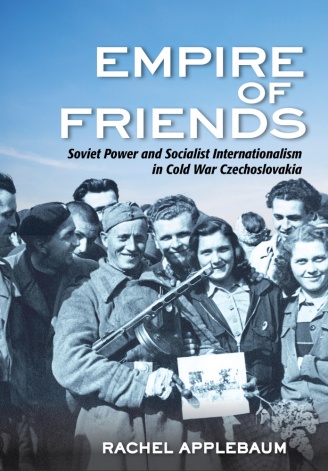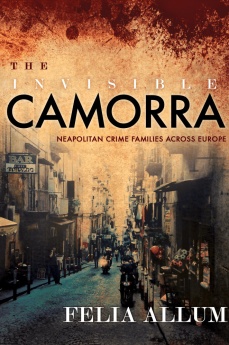After spending more than 30 years researching health care delivery and nursing in the American private, profit-driven health care marketplace, I decided to explore how the Veterans Health Administration (VHA) delivers healthcare to 9 million of the nation’s veterans. Although neither I, nor anyone in my family is a veteran, I knew that the VHA had made impressive strides in implementing healthcare teamwork and improving patient safety. I knew the system was more accountable than the settings in which I –a non-veteran– get my healthcare. I had, however, no idea how impressive the system really is.
Nearly five years observing and interviewing veterans, their families, and their caregivers, showed me how the VHA delivers excellent care –at far lower cost than is available in the private sector– to the nation’s most complex patients.
In Wounds of War, I introduce you to the veterans who receive this care and the dedicated employees who deliver it. I take you into exam rooms, hospital wards, therapy groups, homeless and legal programs, and even cooking classes where the VHA caregivers are interacting with their patients.
And you’ll find that while our broader healthcare system delivers fragmented healthcare services, the VHA is grounded in an integrated model.
It has perhaps the only functioning mental and behavioral health system in the United States and delivers high quality geriatric and end of life care, all while simultaneously addressing patients’ housing, employment, and legal problems.
True, we should all have this kind of integrated care; but it is critical to veterans. After all, military training and service places them at high risk for mental health and substance abuse problems, suicide, chronic pain, homelessness, and legal issues, to name a few.
The VHA has done something really rare in American medicine. Today, many hospitals may advertise team-based care, but will not spend their resources to teach people to work together. The VHA has devoted enormous time and energy to train employees to work on teams. You’d be surprised to find out that a veteran’s primary care provider will actually consult with his or her mental health therapist or orthopedist, social worker, dietician, or physical therapist in a face-to-face conversation –not only through notes entered into a shared electronic medical record–, in order to determine the best plan of care.
Over and over again, I am reminded how lacking this kind of integrated care is outside the VHA.
The other day, a friend who’d been suffering for years from back pain, consulted with a high- priced orthopedic specialist. The specialist peered at his X-rays and declared that he wasn’t a candidate for surgery. Maybe, the physician told my friend, PT would work, or chiropractic, or acupuncture, or even yoga. Check it out, he advised, as he rushed on to his next appointment. My friend was on his own.
If my friend was a veteran, he would have been scheduled for a visit with an integrative pain team. He would have been helped to enroll in the kind of pain classes that significantly reduce patients’ perceptions of pain and enhance daily function. He would have been scheduled for physical therapy and even signed up for classes of yoga and mindfulness meditation. And all of this would have been coordinated by caregivers, not left in the hands of a vulnerable patient.
Plus, it wouldn’t cost the veteran one dime.
Today, President Donald J. Trump and Congressional Republicans are attacking and trying to privatize the entire system, rather than to improve and strengthen it. They are following the game plan of ultra right wing-libertarian billionaires like the Koch brothers, who have carefully crafted a narrative of a broken government-run healthcare system. Aided and abetted by some Democrats who fail to understand the promise and problems of the VHA, they have passed legislation like VA MISSION and VA Accountability Acts. These laws will outsource more VHA care to the private sector, starve the system of resources, close facilities, vilify VHA employees and shift billionaires of tax payer dollars into the hands of private sector hospitals, doctors, mental health practitioners, medical equipment companies, and even real estate developers.
That’s why I hope you will not only read Wounds of War but also join me and the veterans, healthcare reform groups, and unions that are fighting for the VHA. We owe it to the veterans who have sacrificed for their country to maintain and improve a healthcare system designed to serve their specific needs. And it would also be an important step towards promoting the kind of successful models of care that should ultimately be available to all of us, not just veterans.
For more information on Wounds of War and the VHA, listen to our latest #1869podcast:
https://soundcloud.com/user-972332815/1869-ep-56-with-suzanne-gordon-author-of-wounds-of-war
About the author of this blog post: Suzanne Gordon is an award winning journalist and author who writes about healthcare delivery, health care systems and patient safety. Her last book, The Battle for Veterans’ Healthcare: Dispatches from the Front Lines of Policy Making and Patient Care was published by Cornell University Press in May of 2017. She received the Disabled American Veterans (DAV) Special Recognition Award for her work covering veterans’ healthcare. Ms. Gordon is the Senior Policy Fellow at the Veterans’ Healthcare Policy Institute.

 My new book,
My new book,  The most newsworthy example is the way he talks about his experience as a gay man. To conservative Christians who think that homosexuality is a choice, he challenges them using their language: “If you have a problem with who I am, your problem is not with me. Your quarrel, sir, is with my creator.” About his marriage to his husband, Chasten, he says it has moved him “closer to God.”
The most newsworthy example is the way he talks about his experience as a gay man. To conservative Christians who think that homosexuality is a choice, he challenges them using their language: “If you have a problem with who I am, your problem is not with me. Your quarrel, sir, is with my creator.” About his marriage to his husband, Chasten, he says it has moved him “closer to God.”









 Like
Like 



 Next month Cornell University Press will publish
Next month Cornell University Press will publish
You must be logged in to post a comment.